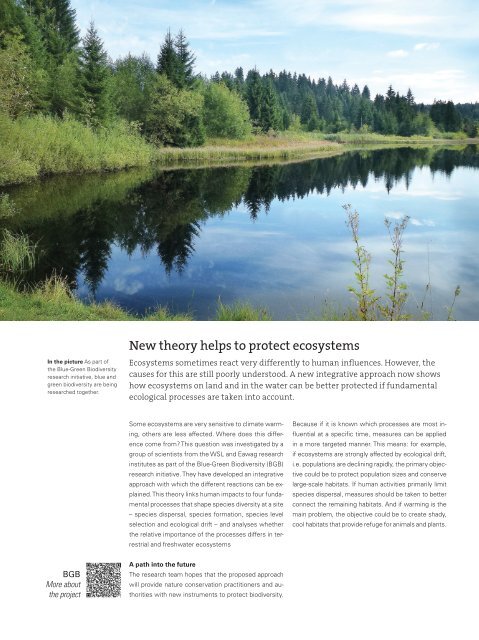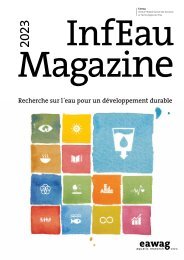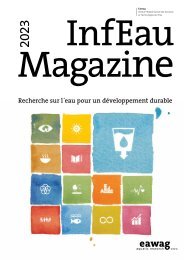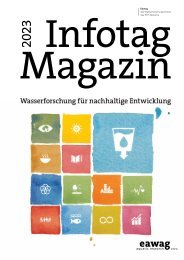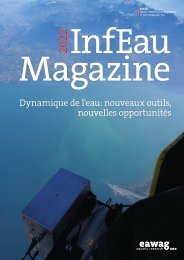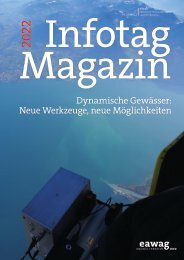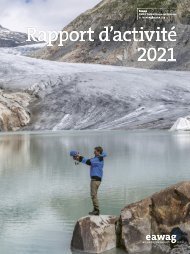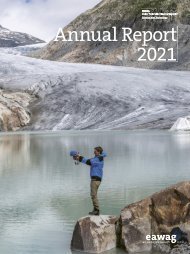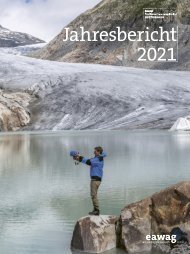Eawag Annual Report 2022
As the aquatic research institute of the ETH Domain, our research is in service of society. You can see this for yourself in our Annual Report. The annual compact review highlights the most relevant research results of the past year and shows how they were developed.
As the aquatic research institute of the ETH Domain, our research is in service of society. You can see this for yourself in our Annual Report. The annual compact review highlights the most relevant research results of the past year and shows how they were developed.
Create successful ePaper yourself
Turn your PDF publications into a flip-book with our unique Google optimized e-Paper software.
30<br />
Bärbel Zierl, <strong>Eawag</strong><br />
New theory helps to protect ecosystems<br />
In the picture As part of<br />
the Blue-Green Biodiversity<br />
research initiative, blue and<br />
green biodiversity are being<br />
researched together.<br />
Ecosystems sometimes react very differently to human influences. However, the<br />
causes for this are still poorly understood. A new integrative approach now shows<br />
how ecosystems on land and in the water can be better protected if fundamental<br />
ecological processes are taken into account.<br />
Some ecosystems are very sensitive to climate warming,<br />
others are less affected. Where does this difference<br />
come from? This question was investigated by a<br />
group of scientists from the WSL and <strong>Eawag</strong> research<br />
institutes as part of the Blue-Green Biodiversity (BGB)<br />
research initiative. They have developed an integrative<br />
approach with which the different reactions can be explained.<br />
This theory links human impacts to four fundamental<br />
processes that shape species diversity at a site<br />
– species dispersal, species formation, species level<br />
selection and ecological drift – and analyses whether<br />
the relative importance of the processes differs in terrestrial<br />
and freshwater ecosystems<br />
Because if it is known which processes are most influential<br />
at a specific time, measures can be applied<br />
in a more targeted manner. This means: for example,<br />
if ecosystems are strongly affected by ecological drift,<br />
i.e. populations are declining rapidly, the primary objective<br />
could be to protect population sizes and conserve<br />
large-scale habitats. If human activities primarily limit<br />
species dispersal, measures should be taken to better<br />
connect the remaining habitats. And if warming is the<br />
main problem, the objective could be to create shady,<br />
cool habitats that provide refuge for animals and plants.<br />
BGB<br />
More about<br />
the project<br />
A path into the future<br />
The research team hopes that the proposed approach<br />
will provide nature conservation practitioners and authorities<br />
with new instruments to protect biodiversity.


